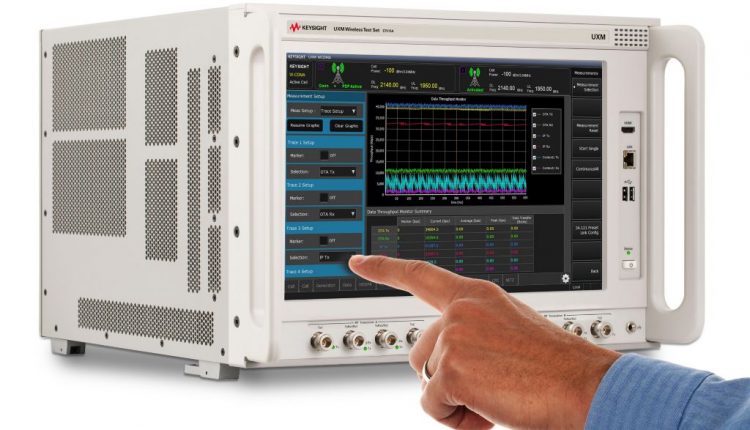UXM Wireless Test Set Selected by Beijing Hwa-Tech for 4G MIMO OTA Test Solution
Keysight Technologies announced that Beijing Hwa-Tech Information System Co., Ltd. (Hwa-tech) has selected the Keysight E7515A UXM wireless test set for integration with its Z6000A MIMO OTA test system. Engineers will use the integrated system for LTE MIMO OTA testing.
Keysight’s UXM is a highly-integrated signaling test set created for performing functional and RF design validation of 4G technologies and beyond. The UXM uses two built-in independent cells to support LTE, LTE-A and W CDMA measurements and delivers up to 4×2 DL MIMO and Carrier A ggregation (CA) in a single box. Hwa-tech, a Keysight solution partner, developed the Z6000A MIMO OTA test system using a standard 16-channel RF emulator to simulate required PAS (power angle spectrum), in line with standard “3GPP TR 37.977 V02.0”, “MOSG150212R10-CTIA MIMO/Transmit Diversity OTA Test Plan Version 1.0”, as well as China standard “Terminal Antenna MIMO OTA Performance Requirements and Methods of Measurement”.
ggregation (CA) in a single box. Hwa-tech, a Keysight solution partner, developed the Z6000A MIMO OTA test system using a standard 16-channel RF emulator to simulate required PAS (power angle spectrum), in line with standard “3GPP TR 37.977 V02.0”, “MOSG150212R10-CTIA MIMO/Transmit Diversity OTA Test Plan Version 1.0”, as well as China standard “Terminal Antenna MIMO OTA Performance Requirements and Methods of Measurement”.
Hwa-tech has also introduced the Z6010A optimized MIMO OTA performance measurement system that uses optimization algorithms and an 8-channel RF simulator to reconstruct approximate measurement accuracy as an economical alternative to the Z6000A.
“Our customers are concerned about system performance, total cost of ownership and system scalability,” said Zhihua Zhang, general manager of Hwa-tech. “The Keysight E7515A UXM wireless test set ensures the overall test accuracy of the system, simplifies the system architecture with its powerful MIMO and carrier aggregation capability, and helps reduce the cost of test.”
“MIMO OTA performance is becoming increasingly important to major network operators, and consequently, more and more customers need to equip its facilities to test this technology,” said Garrett Lees, marketing manager, Keysight’s Mobile Broadband Division, “We are confident that Hwa-tech’s solution, which incorporates the Keysight UXM, will meet the rapidly developing needs of the wireless communications industry.”

